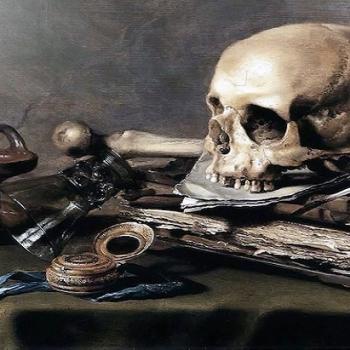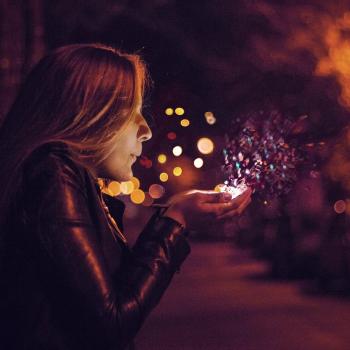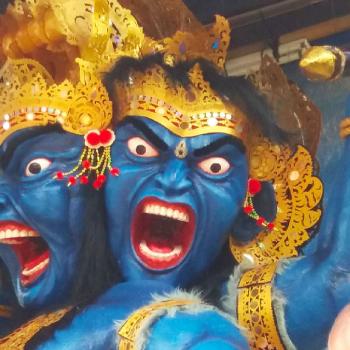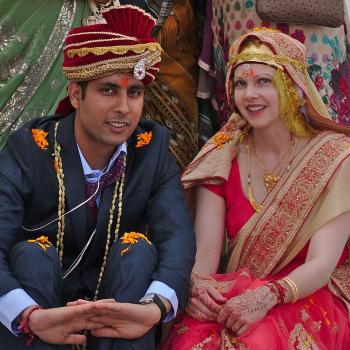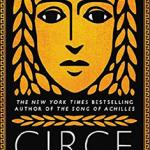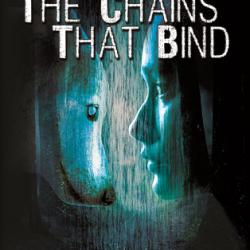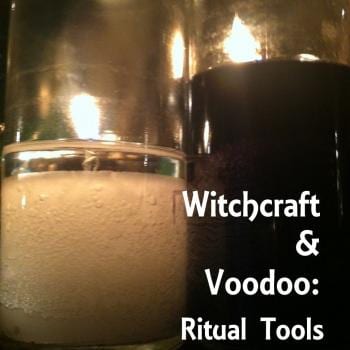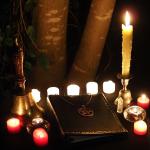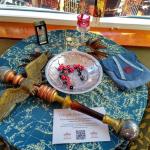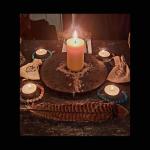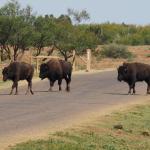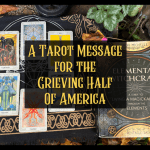Okay, let’s be honest. As seriously as we take our Craft, many of us were drawn to this path because we read too many fantasy novels as children. There’s a reason why the “gaming nerd,” the “medieval recreationist” or the “sci-fi/fantasy nut” who are also Pagans are stereotypes (I am all three). There are a few novels out there that speak strongly of Pagan ideas, or draw us in with a presentation of Pagan or Pagan-like characters. As my final Pagan book list (for a while, anyway) I’ve compiled a list of twenty-two novels, or novel series, that I think were the most influential; by which I mean that they spread Pagan ideas, made people want to become Pagans, or strongly influenced Paganism as it is currently practiced. I have not excluded any genre (though fantasy is clearly the overwhelming majority). I have deliberately excluded popular re-tellings of myths or fairy tales but I have permitted modern extrapolations that make use of mythological characters. I have also deliberately excluded comics and graphic novels (so sorry, The Avengers did not make the list, and this rule also excludes all anime.)
I have no proof of any of my choices other than popular observation; namely, just about every Pagan I know has read these books, and many of them have cited these books as one of their reasons for becoming Pagan. So this is not a scientific study; merely an opinion. If you disagree with my choices, I’m fine with that. For the record, I have read almost every book on this list.
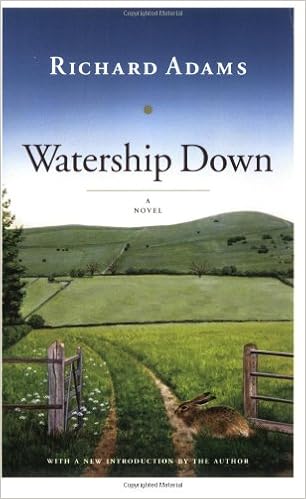 22. Watership Down by Richard Adams (Popularization)
22. Watership Down by Richard Adams (Popularization)
I bet this one surprised you. But Richard Adams, in his lovely tale about rabbits, introduced the Monomyth and the ideas of Joseph Campbell into popular fiction. Consciously written to pattern the Hero’s Journey, Watership Down (which, don’t kid yourselves, is no children’s tale,) follows the trials of trickster-hero Hazel, his shaman brother Fiver, and a host of rabbits who all fulfill classic mythological archetypes (from the Clever Hero to the Strong Hero to the Brave Hero) in establishing a new home for his people. I read it for the first time when I was ten years old, right when a lot of things were coming together that made me the Pagan I am today, and I’ve read it many times since; enough that my first copy fell completely apart and I had to replace it. I know I’m by no means alone. Though it seems almost forgotten today (except for a creepy cartoon that many parents still make the mistake of exposing their small children to) it was an enormously influential novel in the mid 1970s (published 1972, five years before Star Wars came out,) about the same time that a couple of books called The Spiral Dance and Drawing Down the Moon became popular, and I believe that it helped to push many people in our direction.
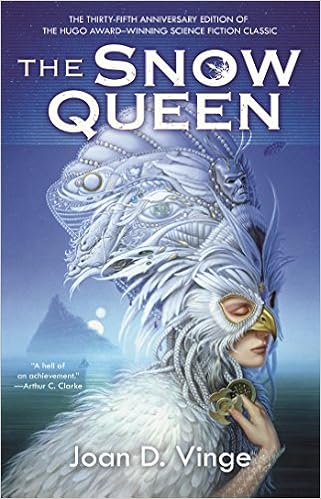 21. The Snow Queen and The Summer Queen by Joan D. Vinge (Popularization)
21. The Snow Queen and The Summer Queen by Joan D. Vinge (Popularization)
These classics of science fiction draw upon Neo-Pagan mythology, but the causes of the situation are entirely scientific.
The planet Tiamat (which is mostly ocean) is ruled by the Snow Queen and the Summer Queen. There’s a nearby wormhole that opens in Winter, which lasts for about 150 years, and during that time, the Snow Queen rules and deals with the Offworlders, who come to trade with the planet. What they are really there for is to harvest the delphinid mers, whose bodies hold the secret for an immortality serum. The Snow Queen and her consort, Starbuck, who wears a horned mask and is responsible for the mer hunt, are given the serum in return for their support of the Harvest.
During the Summer cycle when the wormhole is closed, which lasts about the same amount of time, the Winter people must turn power over to the Summer people who subsequently destroy all technology; the Snow Queen and Starbuck are sacrificed; and the Summer Queens rule instead (though there are several of those in the same amount of time because they are not given the immortality serum).
 Enter Moon and her lover Sparks, who are both merrybegots (conceived during a planetary festival which occurs every twenty years to celebrate that change of power and looks a lot like Beltane crossed with Mardi Gras.) Moon is selected to become a sibyl for her people, which is a Priestess’ calling and it separates her from Sparks. But the sibyls are actually infected with a nanovirus that gives them access to a supercomputer built by the ancestors of the existing civilization that they no longer really know how to maintain, not mystics calling upon the powers of gods (though they might as well be). And the mers are essential to the functioning of this supercomputer.
Enter Moon and her lover Sparks, who are both merrybegots (conceived during a planetary festival which occurs every twenty years to celebrate that change of power and looks a lot like Beltane crossed with Mardi Gras.) Moon is selected to become a sibyl for her people, which is a Priestess’ calling and it separates her from Sparks. But the sibyls are actually infected with a nanovirus that gives them access to a supercomputer built by the ancestors of the existing civilization that they no longer really know how to maintain, not mystics calling upon the powers of gods (though they might as well be). And the mers are essential to the functioning of this supercomputer.
Due to a chance relationship with an Offworlder, Moon discovers the truth of this; and she also learns that she is the clone (reincarnation) of the current Snow Queen, named Arienrhod, who is positioning her to become the Summer Queen, thus assuring her immortality even after the immortality serum is withdrawn at the end of Winter. In the meantime, Sparks has become Starbuck; who is given the immortality serum as long as he amuses the Snow Queen, who he is drawn to, of course, because of her similarity to Moon.
In the second novel Moon, now the Summer Queen, fights to protect the mers, and to ensure that the Summers don’t completely destroy technology so that they will be on an equal footing when the Offworlders return in 150 years; thus stopping the exploitation of their world and its natural resources. She also constantly double checks to make sure that her actions aren’t actually a result of subconscious programming from Arienrhod, an idea which haunts her.
So, how Pagan does this plotline sound to you?
They say this series is loosely based on the Hans Christian Anderson tale, but it veers so widely from that starting point that I feel it’s fair to include it. And since this Hugo winning and Nebula nominated novel series was so amazingly influential in the early 1980s when it was initially published, it introduced this very Pagan myth to many people who may never have encountered it otherwise; much like the more recent movie Avatar. Personally, I loved it, and probably wouldn’t be a witch today if I had not read it as a teenager.
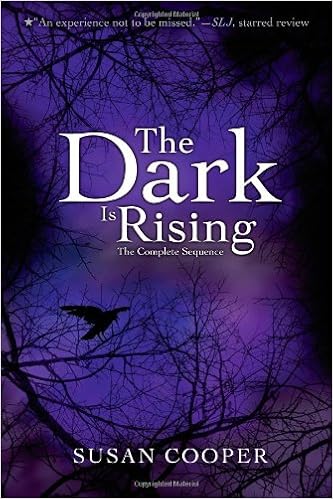 20. The Dark is Rising Sequence by Susan Cooper (Popularization)
20. The Dark is Rising Sequence by Susan Cooper (Popularization)
This series was more influential in the UK and Canada than in the US. British witches had a love affair with all things Arthurian at the time and worked extensively with its “Pagan roots.” This is a five book children’s series that won a variety of awards, including the Newbery award, which draws heavily upon the King Arthur mythos, including all of its distinctly Pagan elements (Welsh, Celtic, and British folk legends, primarily; but also the Christian aspects). However, all of the main characters are contemporary and do not come from the legends. The first book was published in 1965; the last in 1977; so a whole generation of British and Canadian kids grew up on these Arthurian tales. In a way it was the Harry Potter of its day, and it drew children (like me) to research the tales that the stories were based upon and eventually, to seek a Pagan path. It has recently inspired a film by the same name, which, sad to say, is somewhat forgettable.
 19. A Wrinkle in Time by Madeline L’Engle (Influence)
19. A Wrinkle in Time by Madeline L’Engle (Influence)
This was one of the books that you were required to read in my elementary school English program, and I know it was a common feature in such programs in the early to mid-eighties, so again, many children were exposed to it. First published in 1963, this novel, which is part of an amazing series, weds popularized quantum physics to mysticism. Though primarily Christian, it introduced a magical worldview to many children at an impressionable time. Because time and space travel were central to the plot we were also introduced to a variety of cultures we may have known nothing about, and a Pagan interpretation of the mysticism is also offered along with the Christian one.
 Perhaps I’m biased, but my mind was blown by the popularized variation of quantum physics that L’Engle was writing about, and I am certain that this opened the door to our present infatuation with the subject (though of course we must also give a nod to The Dancing Wu Li Masters; but that’s not a novel.) I was completely enamoured of this series, fell in love with the characters, and at one point an experience with one of the later novels in the series, A Swiftly Tilting Planet, which taught me St. Patrick’s Rune, led to a direct divine experience that has shaped my life since.
Perhaps I’m biased, but my mind was blown by the popularized variation of quantum physics that L’Engle was writing about, and I am certain that this opened the door to our present infatuation with the subject (though of course we must also give a nod to The Dancing Wu Li Masters; but that’s not a novel.) I was completely enamoured of this series, fell in love with the characters, and at one point an experience with one of the later novels in the series, A Swiftly Tilting Planet, which taught me St. Patrick’s Rune, led to a direct divine experience that has shaped my life since.
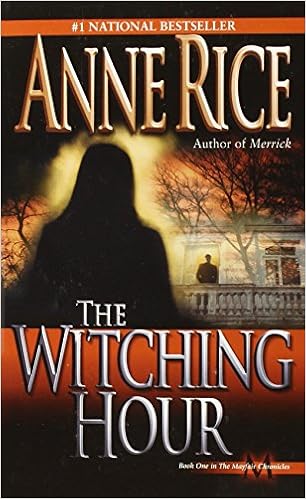 18. Lives of the Mayfair Witches series by Anne Rice (Influence/Popularization)
18. Lives of the Mayfair Witches series by Anne Rice (Influence/Popularization)
Arguably, the success of this series, first published in the early 1990s, may have spawned the paranormal romance phenomenon. Anne Rice’s sexy and powerful witches were highly influential at a time when Wicca 101 books flooded the bookstores and Buffy the Vampire Slayer and The Craft were popular. Providing a more sophisticated view of witches as spirit-workers and psychics, rather than people who threw fireballs out of their fingers, these books were read by every single witch I knew in the 90s. And while I’m certain that godspouses existed long before then, suddenly people weren’t afraid to admit to it. I’ve only read the first of this series, I’m sorry to say, so I can’t really offer you an educated personal opinion on it.
 17. The Da Vinci Code by Dan Brown (Influence/Popularization)
17. The Da Vinci Code by Dan Brown (Influence/Popularization)
This influential 2003 novel led, of course, to a very popular movie by the same name. Drawing heavily upon the material in Holy Blood, Holy Grail, Brown introduced the concept of the Divine Feminine to millions. Brown also introduced elements of occultism, Freemasonry, and Paganism, including the pentagram path of Venus and the Great Rite. This sparked a revolution in attitudes towards women in faith, and probably directly inspired the tradition of the Christian Witch; which, before that, was an extreme rarity. It’s a pretty well written thriller, but its primary contribution was that suddenly the biggest faith-group in North America was confronting the Divine Feminine en masse.
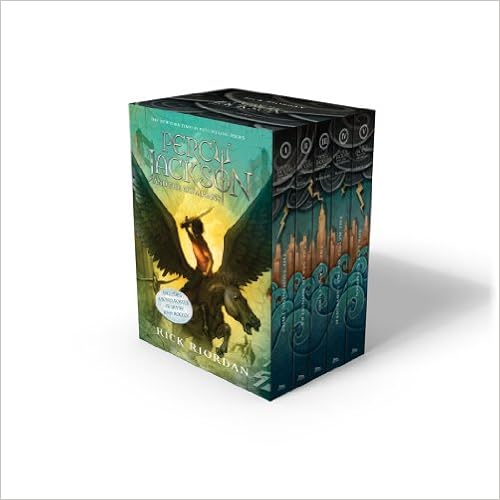 16. Percy Jackson and the Olympians series by Rick Riordan (Influence)
16. Percy Jackson and the Olympians series by Rick Riordan (Influence)
Piggybacking on the Harry Potter phenomenon, Rick Riordan has found a whole new way to introduce the Greek gods, and the essential philosophical concepts of Greek mythology, including the heroic virtues, to a whole new generation of children. The Percy Jackson series follows the adventures of a group of children who happen to be contemporary demigods. The Lightning Thief, the first of the series, sparked a cool 2010 movie that was a commercial success but received mixed reviews. The first novel in the series was published in 2005 and the series is still being written. It’s been on the New York Times bestseller list continually since late 2011, and I think the only reason it isn’t getting a higher rating on this list is because it hasn’t been around long enough for us to know the full extent of its influence. However, I have noticed a whole generation of brand-new Hellenismos who have grown up on these tales are now coming of age, just as the Avengers movies have birthed a whole new generation of Asatru and Northern Pagans.
I’ve read the first three, but since I was a grown up when I read them I couldn’t handle the logical inconsistencies in the stories and quit (like Camp Half-Blood, which makes no sense whatsoever).
 15. American Gods by Neil Gaiman (Influence)
15. American Gods by Neil Gaiman (Influence)
This awesome Hugo and Nebula award winning novel was published in 2001, and I think it might be almost single-handedly responsible for much of the Devotional Polytheism phenomenon. Before its existence, if you said anything at all about the idea that the gods maybe don’t stay the same as they were in ancient times — that perhaps they adapt and change to be congruent with modern culture and civilization — you’d have been laughed off all of the Pagan Yahoogroups. Now, this movement is huge, and I think that’s a good thing. After all, if gods are going to remain relevant, They have to speak to aspects of the lives we lead now, and not just our ancestors.
I loved this novel, and I loved the way Gaiman depicted modern gods. His idea of different variations from different cultures that were the same being yet different (such as the way Odin presented in America vs. the way that Odin presented in Scandinavia, with a vague knowledge of what their counterpart was doing) has directly coloured our understanding of Devotional Polytheism. The stamp is unmistakable.
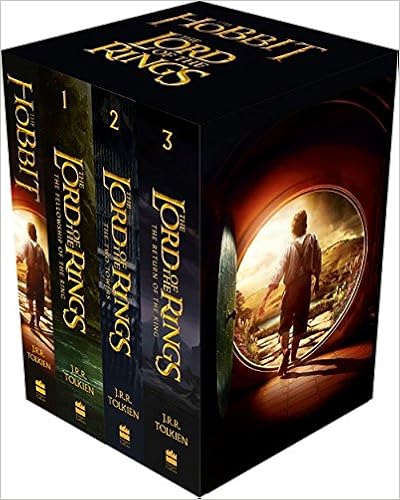 14. Lord of the Rings & The Hobbit by J.R.R. Tolkien (Influence)
14. Lord of the Rings & The Hobbit by J.R.R. Tolkien (Influence)
You would think that this very Christian morality tale has little to do with people taking up Paganism. But first, tell me you haven’t read it. And if you haven’t read it, tell me you haven’t seen the movies. Of course you have.
Tolkien’s classic, the first of which (The Hobbit) was published in 1937 to wide acclaim and numerous awards in children’s literature, introduced us as children or teenagers to numerous Pagan concepts that we may not ever have encountered before; Norse and Celtic cultural myths (though adapted); runic magic; riddle magic; the sidhe and the dwarves; themes borrowed directly from the Poetic Eddas, the Mabinogion, Childe Roland and the Arthurian tales; mythological Otherworlds; and the values of British Romanticism, including the sacredness of the living earth and of the powers of Nature. It also follows the Campbellian model of the Hero’s Journey so precisely that I’ve used its story to illustrate the concept.
Moreover, Tolkien critics have claimed that the hidden meaning in his saga was ultimately that trying to cheat death is the root of all evil and that natural cycles are sacred in and of themselves. And that is a very Pagan idea.
The influence of these novels is probably even more pronounced in Europe and New Zealand (after Peter Jackson’s movies if not before) than it is in North America. I can tell you that every single French-speaking witch I know from Quebec to Paris has read them. Tolkien has a huge fan following in Europe that rivals the North American Trekkie phenomenon. I would probably place it higher on this list were it not for the fact that many of its ideas are only peripherally Pagan. But I probably would not have been a Pagan myself without reading these legendary classics.
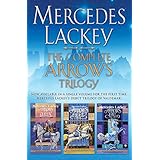 13. Valdemar novels (Heralds of Valdemar series, Vows and Honor series, and The Last Herald-Mage of Valdemar series) by Mercedes Lackey (Popularization)
13. Valdemar novels (Heralds of Valdemar series, Vows and Honor series, and The Last Herald-Mage of Valdemar series) by Mercedes Lackey (Popularization)
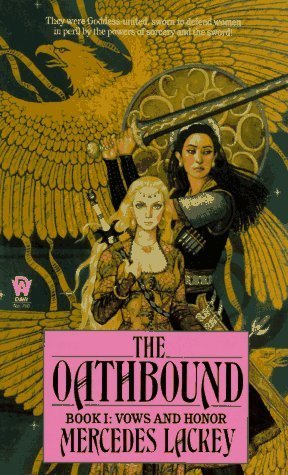 The first of these now classic fantasy novels was published in 1987 (Arrows of the Queen). Valdemar is a nation in an alternate world in which magic and spirit-companions physically exist and have a bearing on reality (though, in the times of the first books, it’s rare) and this is different from psychic powers, which are known as “Gifts.” What differentiates these novels from other fantasy novels is that, in addition to being widely read and enormously popular, Mercedes Lackey is herself (or was) a Pagan, and her magic and her psychic powers work in ways that Pagans would recognize as originating from our concepts of metaphysics. Her tribal peoples worship four goddesses (Maiden, Warrior, Mother and Crone) and four gods (Rover, Guardian, Hunter and Guide); her mages draw extra power from nodes and ley lines and use crystals to help focus spells intended to last more than a few seconds, and the second book of the Heralds of Valdemar series, Arrow’s Flight, contains the best description of grounding and centering that I have ever read in any book anywhere.
The first of these now classic fantasy novels was published in 1987 (Arrows of the Queen). Valdemar is a nation in an alternate world in which magic and spirit-companions physically exist and have a bearing on reality (though, in the times of the first books, it’s rare) and this is different from psychic powers, which are known as “Gifts.” What differentiates these novels from other fantasy novels is that, in addition to being widely read and enormously popular, Mercedes Lackey is herself (or was) a Pagan, and her magic and her psychic powers work in ways that Pagans would recognize as originating from our concepts of metaphysics. Her tribal peoples worship four goddesses (Maiden, Warrior, Mother and Crone) and four gods (Rover, Guardian, Hunter and Guide); her mages draw extra power from nodes and ley lines and use crystals to help focus spells intended to last more than a few seconds, and the second book of the Heralds of Valdemar series, Arrow’s Flight, contains the best description of grounding and centering that I have ever read in any book anywhere.
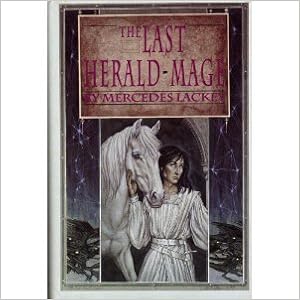 In an unusual twist, “Misty,” as her fans call her, is also a songwriter, and the filk music that she wrote about her own novels became really popular on the Ren Faire and medieval recreationist circuits, especially since most of them were professionally recorded by such Pagan filk singers as Leslie Fish, Meg Davis and Heather Alexander (now Alexander James Adams). Many of these songs are Pagan too; devotionals to the gods of the world, and a couple of songs that can be sung directly as spells. People who had never read the books heard the songs and shared them, and many others were inspired to go and find those 1990s Wicca 101 books as a result. They often end up in Pagan music playlists. And on top of that, Misty broke all kinds of conventions of the fantasy writing of the time in writing about a hero who was gay and a heroine who was asexual.
In an unusual twist, “Misty,” as her fans call her, is also a songwriter, and the filk music that she wrote about her own novels became really popular on the Ren Faire and medieval recreationist circuits, especially since most of them were professionally recorded by such Pagan filk singers as Leslie Fish, Meg Davis and Heather Alexander (now Alexander James Adams). Many of these songs are Pagan too; devotionals to the gods of the world, and a couple of songs that can be sung directly as spells. People who had never read the books heard the songs and shared them, and many others were inspired to go and find those 1990s Wicca 101 books as a result. They often end up in Pagan music playlists. And on top of that, Misty broke all kinds of conventions of the fantasy writing of the time in writing about a hero who was gay and a heroine who was asexual.
I think that some of her novels are better than others, but the ones I’ve recommended are some of the best, and the most Pagan. I’ve read them several times and I know I’ll do so again.
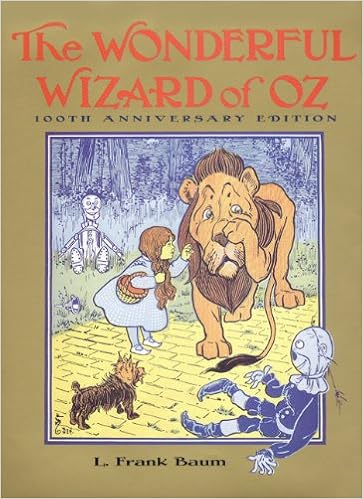 12. The Wonderful Wizard of Oz by L. Frank Baum (Influence)
12. The Wonderful Wizard of Oz by L. Frank Baum (Influence)
Boy, do you ever have to work to find the original edition out there! Most of the stuff you see listed on Amazon is an annotated variation, usually designed for small children. This is the 100th anniversary edition I’ve linked, which includes all the original illustrations of the book that was first published in 1900, some of which are in pop-ups.
This highly influential children’s novel, the first in a series of fourteen books devoured by generations of children, of course sparked one of the most successful movies of all time, and it’s one that we have all seen in our childhoods. The movie was made in 1939 (though there have been several others); which, of course, was right about the time that Gardner was (re)inventing Wicca. And countless little girls have been inspired to witchcraft since it asked a simple question that most literature had never before asked, “Are you a good witch, or a bad witch?”
And if that wasn’t enough to secure its place in this list, in 1995 the impression left by the Wicked Witch of the West inspired a man named Gregory Maguire to re-write things from her point of view in his bestselling novel Wicked; the Life and Times of the Wicked Witch of the West. Part of a trend in recent years to rewrite fairy tales to empower women and outsiders instead of chastising and condemning them, this novel was used as the basis for the 2003 smash Broadway musical. And Elphaba has inspired a whole new generation of little girls, many of whom are now coming of age, to question what makes a “good witch” and a “bad witch.”
I read The Wonderful Wizard of Oz and loved it; but obviously after I’d seen the movie, because when I received the hardcover two-volume edition (1987) that also includes The Marvelous Land of Oz, which I still have, I remember being delighted that there were actually other books in the series. I eventually read almost all of them. And I’ve read Wicked. And I loved it too. I’ve not yet seen the musical, but I know almost all the words to “Defying Gravity.”
Stay tuned for Part 2!
Next: 22 Novels that Popularized (and Influenced) Pagan Ideas (Part 2 of 2)
Like Between the Shadows on Facebook and never miss a post!



